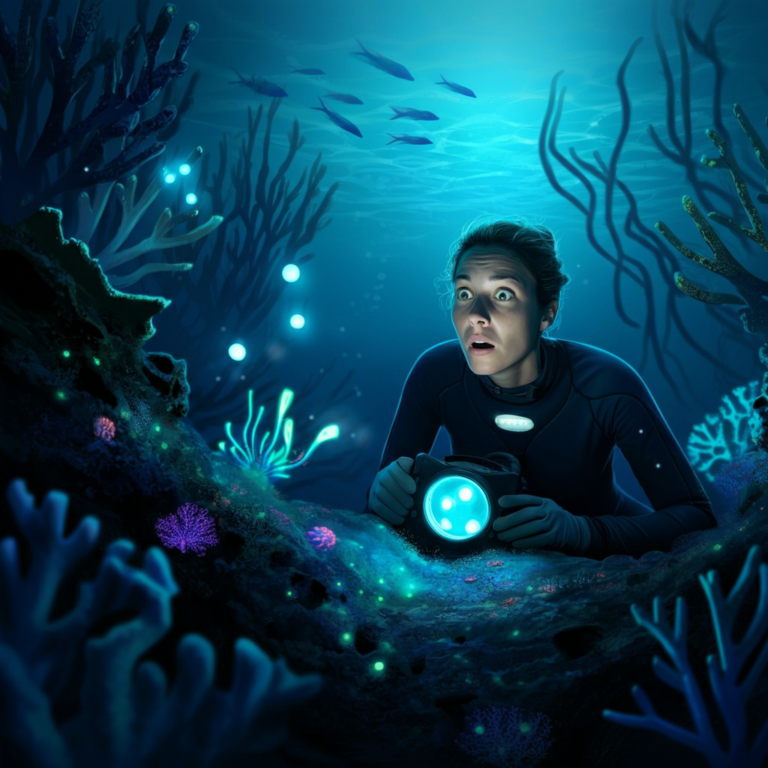The ocean is vast and mysterious, holding secrets that we’ve only just begun to uncover. Among its many enigmatic realms lies the Twilight Zone, a dimly lit layer between 200 and 1,000 meters below the surface. Here, sunlight barely penetrates, creating an otherworldly habitat teeming with unique and bizarre species. For marine biologists, science enthusiasts, and nature lovers, the Twilight Zone offers an irresistible blend of wonder and scientific discovery.
This blog will guide you through the Twilight Zone, exploring its unique ecosystem, showcasing its fascinating inhabitants, and discussing why it is critical to protect this extraordinary environment. We’ll also highlight groundbreaking research and ponder the future of uncovering its hidden treasures.
What is the Twilight Zone?
Also known as the mesopelagic zone, the Twilight Zone sits just below the ocean’s surface layer (the epipelagic zone). With sunlight unable to fully penetrate, this layer exists in perpetual semi-darkness. Temperatures drop steeply, oxygen levels plummet, and the pressure climbs as you go deeper into this realm.
While these extreme conditions might seem inhospitable, they’ve given rise to a thriving ecosystem. Estimated to hold 90% of the world’s total fish biomass, the Twilight Zone is brimming with life, much of which remains a mystery.
How Life Thrives in the Twilight Zone’s Unique Ecosystem
Adapting to such harsh conditions requires incredible ingenuity. The species that inhabit the Twilight Zone have evolved in fascinating ways to survive low light, scarce food, and staggering pressure. Here are some key environmental features and the adaptations species use to thrive:
- Scarce Light
With sunlight almost nonexistent, many species rely on bioluminescence, or the ability to produce light through chemical reactions in their bodies. This helps them lure prey, attract mates, or confuse predators.
- Food Scarcity
Food in the Twilight Zone falls primarily from above in a phenomenon called “marine snow”—decomposing organic material sinking from surface waters. Many species, like the lanternfish, migrate to higher layers at night to hunt, returning to the depths by day.
- Pressurized Environment
With increasing depth, water pressure becomes immense. Creatures here exhibit remarkable adaptations, such as flexible bodies and the absence of rigid skeletal structures, to endure these extreme conditions.
A Balancing Act
The Twilight Zone is a critical link in the ocean’s food chain. Small fish and plankton safely reside here during the day and migrate to the surface at night, supporting predators like tuna, sharks, and whales. The Twilight Zone also acts as a carbon sink, storing atmospheric carbon deep in the ocean.
However, this delicate balance is increasingly threatened by human activities. Overfishing and climate change are altering the fragile ecosystem, potentially leading to the collapse of vital food chains and loss of biodiversity.
Uncovering Mysteries of the Deep
Despite its importance, much about the Twilight Zone remains unknown. Only recently have technological advancements given us a glimpse into this mysterious realm. From remotely operated vehicles (ROVs) to acoustics-based research methods, scientists are uncovering new species, studying their behavior, and gaining insight into their roles within this unique ecosystem.
One such groundbreaking study used acoustic technology to estimate fish
Bizarre Creatures of the Twilight Zone
If you think aliens only exist in space, think again. The Twilight Zone is home to some of the most extraordinary and unusual creatures on the planet. Let’s take a closer look at a few of its famous residents:
- Anglerfish
Known for its haunting appearance, the anglerfish uses a glowing lure on its head to attract unsuspecting prey. This adaptation is as functional as it is striking, making anglerfish an icon of the Twilight Zone.
- Barreleye Fish
With a transparent, dome-shaped head, the barreleye fish has upward-facing, tubular eyes capable of spotting faint silhouettes of prey in the darkness above.
- Vampire Squid
Despite its ominous name, the vampire squid is a gentle filter feeder that uses its bioluminescent tendrils to capture organic material drifting downward from the upper ocean layers.
- Lanternfish
Likely the most populous vertebrate species on the planet, lanternfish are notable for their bioluminescent organs, which they use for communication and camouflage.
- Gulper Eel
Equipped with an enormous mouth that inflates like a balloon, the gulper eel swallows prey much larger than itself—a handy skill in a scarce food environment.
The Importance of Conservation
While the Twilight Zone may seem remote and untouched, it faces a growing number of threats:
- Overfishing
Many species, such as lanternfish, are being harvested on a massive scale for commercial fishmeal production, disrupting delicate ecological balances.
- Climate Change
Warming ocean temperatures and shifts in currents are impacting the availability of oxygen and food, endangering the intricate web of life in this zone.
- Pollution
Marine snow is often contaminated with microplastics and other pollutants from human activity. These toxins make their way into the Twilight Zone ecosystem, posing significant health risks to its inhabitants.
Conservation Efforts
Thankfully, efforts are underway to protect this vital ecosystem. Global initiatives such as the High Seas Treaty aim to regulate fishing and prevent exploitation in international waters. Researchers and conservationists are also advocating for increased funding and marine protected areas to safeguard the Twilight Zone.
Research and Future Discoveries
Despite the challenges of exploring such remote terrain, scientific research on the Twilight Zone is rapidly advancing thanks to cutting-edge technology like remotely operated vehicles (ROVs) and deep-sea submersibles.
Ongoing Studies
Organizations like the Woods Hole Oceanographic Institution (WHOI) and the Monterey Bay Aquarium Research Institute (MBARI) are at the forefront of Twilight Zone studies. These investigations are revealing not only ecological insights but also practical uses for humans, such as discovering bioluminescent properties that could inspire sustainable lighting systems.
The Promise of Discovery
It’s estimated that 95% of the Twilight Zone’s species remain undiscovered, holding immense potential for breakthroughs in medicine, technology, and environmental conservation. The more we explore, the greater our understanding and appreciation for the ocean’s mysteries.
Why We Must Keep Exploring the Ocean’s Depths
The Twilight Zone is a realm of wonder, brimming with life that fuels the health of our oceans and offers countless lessons for humanity. Protecting and understanding this mysterious world is not only essential for marine ecosystems but also for broader environmental and scientific advancements.
For marine biologists, science enthusiasts, and nature lovers, the Twilight Zone reminds us how much there is to learn—and how crucial it is to preserve that knowledge for future generations.
If you’ve been inspired by the incredible life and untapped potential of the Twilight Zone, consider supporting conservation initiatives or participating in citizen science projects. Together, we can shine a light on the secrets hidden 1,000 meters down.





















0 Comments